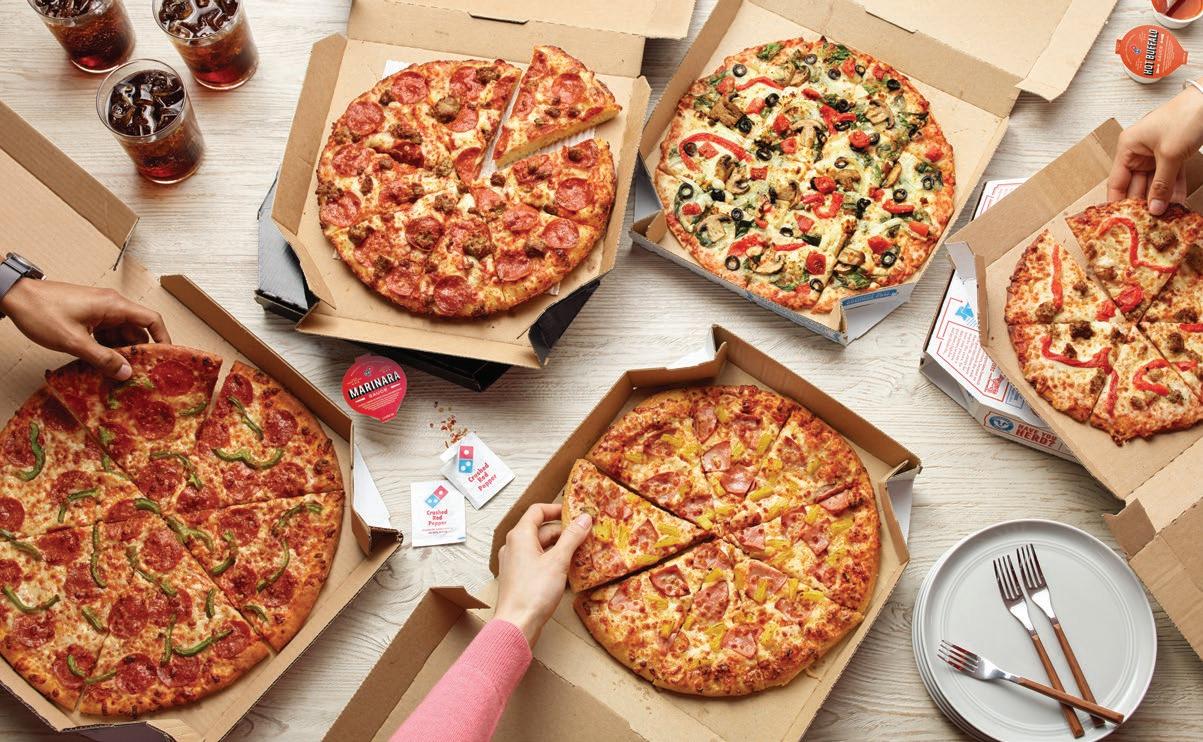
5 minute read
The space between JMU students bond with residents of Virginia Mennonite Retirement Community through art
from The Breeze 4.6.23
by The Breeze
By CAROLINE STOAKS Contributing Writer
An exuberant man and a soft-spoken woman sit together at a table. A blank canvas, art supplies and 80 years lie between them.
Advertisement
Virginia Mennonite Retirement Community member, Paul, 101, and JMU student, Jamie Yedloutschnig, 21, have become unlikely friends who share a bond over art and relatable memories.
She guides Paul in laying masking tape on a canvas and encourages him to paint over the tape to reveal an abstract art piece.
Yedloutschnig is one of 24 health science students at JMU who partnered with VMRC to participate in Opening Minds through Art. According to the OMA website, the program is an “award-winning, evidence-based, intergenerational art-making program for people with Alzheimer’s disease and other forms of neurocognitive disorders.”
“It’s very rewarding,” Yedloutschnig said. “They enjoy the younger population coming in. I hear constant chit-chat coming from the other tables and I see all of them smiling and laughing.”
OMA was founded in 2007 by Elizabeth “Like” Lokon, a gerontologist and Miami University professor who spent weeks undercover in a long-term care facility, Cindy Paullin said, the executive director of Art for the Journey in Richmond and an OMA training partner.
“She took notes and she started to understand how things were, what types of activities were being delivered and how people related to people living with dementia,” Paullin said.
Paullin flew to Ohio in 2015 in search of a failure-free art program for care facility residents with dementia. After discovering Lokon’s work, Paullin brought back an OMA certification in one hand and a hope of future intergenerational friendships in the other.
Fast forward seven years.
Over the past year, Paullin said they were able to secure a grant for over $1 million to expand the OMA program across Virginia. The grant enables the certification of 204 new OMA facilitators and thousands of dollars of art supplies for 102 nursing homes, she said.
VMRC is one of the Virginia nursing homes reaping the benefits of Paullin’s discovery eight years ago.
Lolly Miller, the arts and education program manager at VMRC, said after winning grant money, it needed volunteers.
“JMU advocates for community outreach, so it was a win-win partnership,” Miller said.
Following a three-hour wheelchair and etiquette training, students are partnered with a VMRC resident they meet with every week to create an abstract art piece.
Each session starts with a huddle, where OMA facilitators demonstrate the art project to the volunteers. When the residents arrive, everyone sings the opening song, “You Are My Sunshine,” and the artists start creating.
The program emphasizes allowing the residents to have creative freedom, Yedloutschnig said.
“A lot of times with the elderly, people tend to want to make decisions for them ... but they still can think for themselves,” Yedloutschnig said. “I will never be like, ‘Do you want to use the color orange?’ I’ll be like, ‘What color do you want to use?’ I won’t suggest a color or suggest what to paint.”
One of the things Lokon noticed while undercover was how staff spoke to individuals with dementia using words like, “‘sweetie,’ ‘honey’ and ‘you’re so cute,’” Paullin said.
“That type of language is meant well, but unfortunately, it actually makes the person feel lesser as if they’ve gotten to be back in kindergarten or they have to be handled in a certain way,” she said.
OMA teaches volunteers to not engage in “elder speak” but rather “art talk,” using terms such as contrast, form and texture.
“We talk about how we raise the integrity of our language,” Paullin said. “Rather than the elder feeling a sense of disability of any kind, they start feeling the integrity of those comments.”
Miller said creating art improves brain and physical health because “creative expression boosts the immune system.” They also have a new role in society as an artist, she said.
OMA offers easy-to-do abstract art that can be completed in one hour, “which is very affirmative to people that sometimes have lost, you know, a sense of purpose,” she said.
“Within that short amount of time,” Miller said, “you’ve got something that shows your ability, your sense of worth to others and how you can be a part of a group cohesion.”
After each artist finishes their artwork, the name of their art piece is announced and residents uplift one another for their creations.
“You’re getting affirmation from your own peers,” Miller said. “We all strive for that.”
Affirmation is also given by the volunteers and genuine friendships are formed, Miller said.
“The most valuable thing is remembering they still enjoy things that we do,” Yedloutschnig said. “When we’re talking, they still have things in common with me, and I have things in common with them.”
Ashley Printz, an OMA facilitator at VMRC, said after the first week, a JMU student said they needed the same resident the next week because they made such a strong connection.
VMRC OMA facilitator Jacalyn Lee said a student had a rough day and just interacting with a resident made a positive difference in her day. “When she came back again, she said, ‘Do I get to have my resident? Because I need her.’”
Paullin also shared a story of an artist, Margaret, who was the only African American resident in her care facility and had a son who didn’t visit often. Her first volunteer partner, Rahim, was a VCU student who looked a lot like her son, Paulin said, “and it was such a beautiful thing to watch their connection.”
Margaret always looked forward to seeing Rahim, and Rahim was just as excited, Paullin said. The two stayed in touch even after he left college.
“What happens when you listen to an elder, when you spend time with an elder, is you give them back their voice,” she said.
Paullin emphasized the expansive nature of the program, as it touches the hearts of the volunteers, the residents, the residents’ families and the staff.
“It gives peace to a family member because they now know somebody cares about them, especially a college student,” Paulin said. “That’s really a gift.”
Lee said the colors the resident used made him think specifically about the memory he never talked about.

Lee and Printz said they both witness change and improvement within the one-hour encounters.
“Their overall moods are better … If you have someone that is very anxious or not so positive, then at the end, they are more pleasant,” Lee said.
The artists fill out an evaluation before and after the program.
“We’re seeing the scores go from low to high,” Printz said. “One of our residents, who is difficult to please, scored the highest at the end that this was a good use of his time, which was amazing.”

Another resident who despises rain still came to the session when it was raining, Printz said. “She’s 97 and she has a lot of life in her.”
“Art has a positive impact on life,” Caitlin Ickes, VMRC OMA facilitator, said. “We show off their art after they name it and their eyes light up when they see their piece being highlighted.”
After the residents’ art pieces are framed and shown around the room, the residents end the session by singing, “This Little Light of Mine.”
The 10-week program culminates with an exhibition this month showcasing all the art, Miller said.
“All of this is creation, it’s engagement and it’s exchange. It’s bridging two different generations and letting them share a time together in creating something really, really beautiful.”
CONTACT Caroline Stoaks at stoaksca@dukes.jmu.edu.
For more on the culture, arts and lifestyle of the JMU and Harrisonburg communities, follow the culture desk on Twitter and Instagram @Breeze_Culture.











